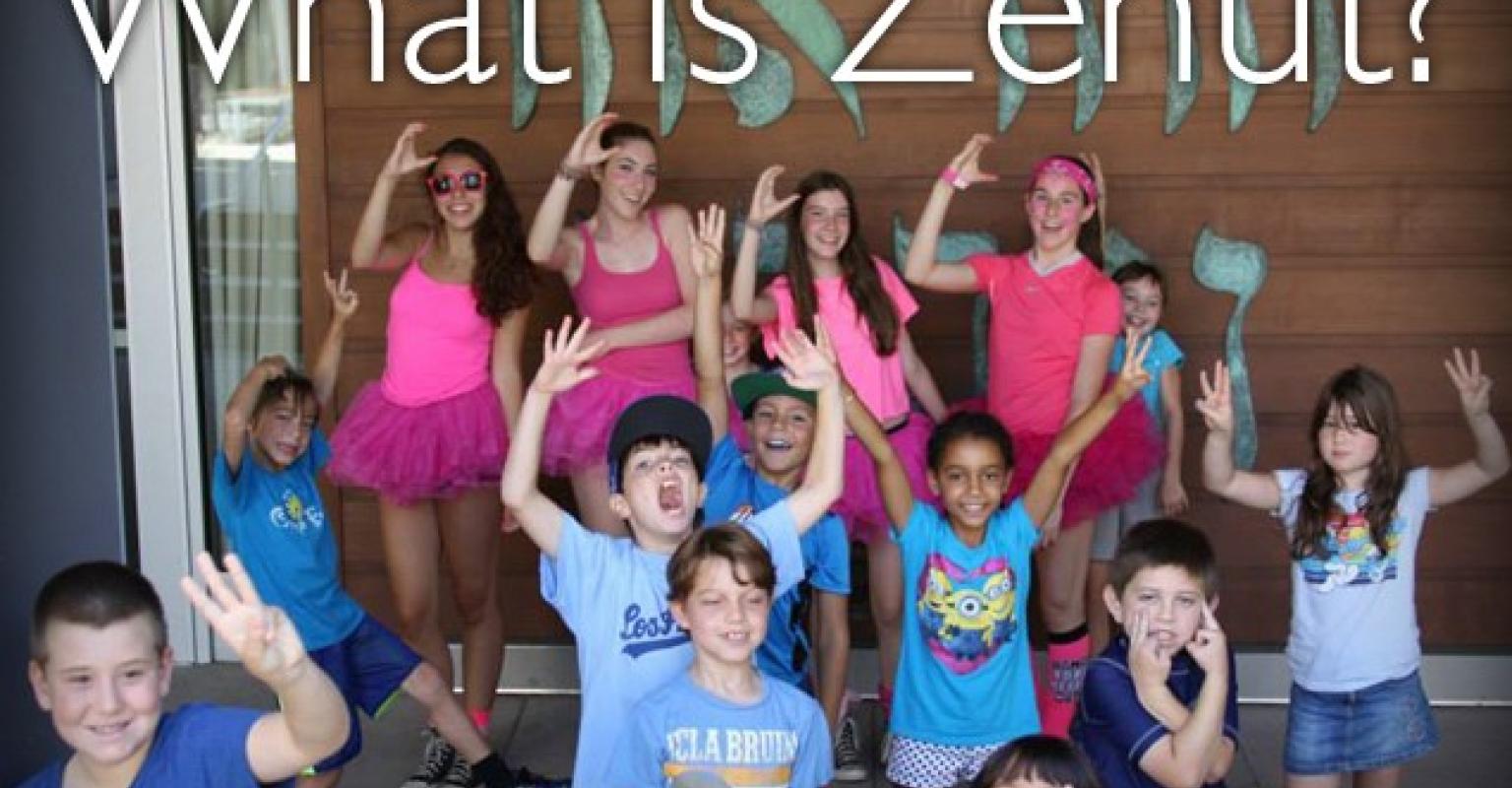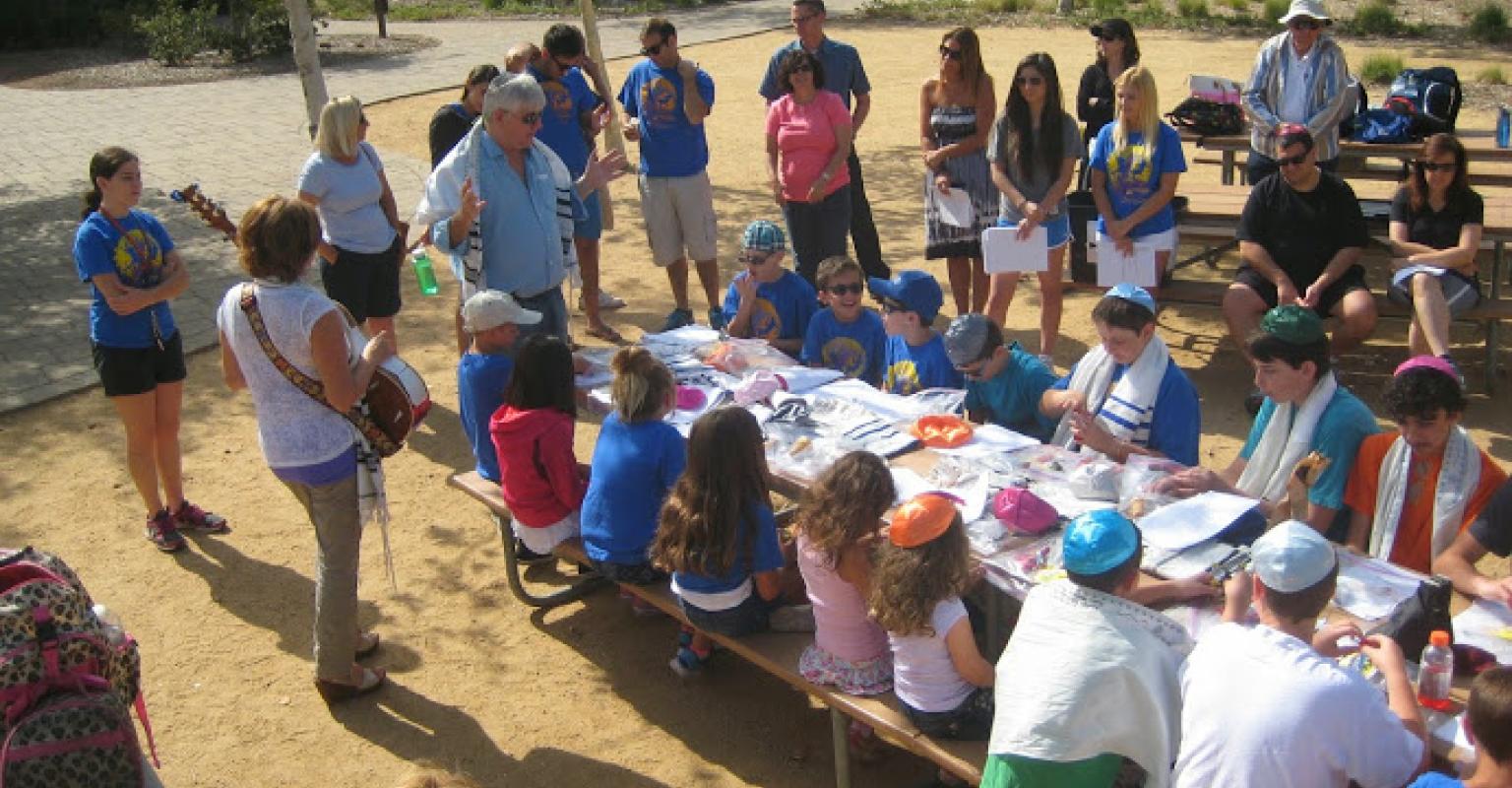Family Learning Model: Zip Havurah
Ahavat Achim Synagogue, Atlanta, GA

Model Summary:
Zip Havurot is a family engagement initiative designed to connect families to one another in authentic Jewish environments through learning about and observing mitzvot together. Students and their families meet five times a year, outside of regular religious school hours, as a group based on geographic location, to celebrate and learn. For example, a group may choose to gather for a Shabbat dinner, volunteer to help the needy in the community, or head out for a hike or camping trip to increase awareness of environmental issues as they relate to specific Jewish holidays.
Who are the Learners?
-
Learners range from pre-k students through adults.
-
The ideal group comprises 5-6 families.
-
The group has an average of 10-12 kids per group.
- Each Zip group, based on zip codes, gives themselves an identity. For example, a group on the Northern perimeter of Atlanta calls themselves “The Northsiders.”
Who are the Educators/Learning Facilitators?
-
They are teachers within the religious school and there is also an administrative person connected with each Zip group.
- There is one professional (including clergy and full-time staff) as well as 2 teacher facilitators for every Zip havurah group.
When Does the Learning Happen?
-
The school preparation time happens twice a month for an hour.
-
Next year this preparation time will happen once a month for an hour.
- Zip groups are given some parameters for when their individual programs need to happen; e.g., the first program needs to happen between these dates, etc. This schedule is set at the beginning of the year so that parents know to block out this time well in advance.
Where Does the Learning Happen?
-
Each Zip havurah engages in 4-5 experiences outside of the religious school.
-
The Zip havurot initiative is also part of the religious school day.
- There is one hour twice a month when parents get together for Zip planning time. Parents assist the teachers and madrichim (counselors/leaders) in this planning. Next year this planning block will become part of “Family Education Sunday.”
What is the Learning? How is it Designed?
-
The learning varies according to the experience. Each group is charged with having 4-5 Zip experiences that take place outside of the religious school. These experiences can be Shabbat -based, holiday-based, or mitzvah- based; each group decides what they are interested in doing for the year.
-
When the model was new, each Zip havurah was required to have a Friday night dinner, a Saturday morning experience, a Havdalah, and one social action experience. As time has gone on, there are no longer strict parameters. One group has a year-long project, one group has a theme, others prefer a series of a variety of experiences that they have planned for together.
-
Some of the Zip time during the school day is to learn to lead various prayers and make ritual objects that will enhance Shabbat. Parents have researched what Jews are like in different countries and parents teach the Zip kids about what they have learned. The goal is to make sure that there is some learning around each Zip experience. For example: Why are we going to participate in a hunger walk? Parents and kids will engage in Jewish learning contextualizing the mitzvah, teaching-related Jewish texts, etc.
- Learners experience authentic Jewish living in real-time. They learn key Jewish texts, concepts, and values and explore their own beliefs, all in the context of a warm, caring community of families.
What Were You Trying to Achieve with this Model?
Ahavat Achim Synagogue wanted to create an innovative family education program that complemented their existing school model. They were also trying to connect families to one another in a way that increased Jewish involvement and engagement. It wasn’t that they were trying to get every family to observe Shabbat. Rather, their goal was to have each family moving forward in their own way on their Jewish journey, taking a small step forward from where they are. For example, if families are going out for Friday night, maybe they would now take a moment to bless their children. The goal of Zip Havurah was to bring families together to ‘do Jewish’ a little more and to recognize that Judaism goes to the experience of everyday life.
Key First Steps and Recruitment Plan:
-
The parents were approached for buy-in when this initiative was first started. Recruitment for Zip Havurot was part of the registration materials.
-
Ahavat Achim Synagogue also reaches out to their day school families to be a part of this initiative. Day school parents do not have to come to the Sunday planning parts but they are part of the Havurah. The congregation wants to work more on strengthening this aspect as well as reaching out to grandparents to make the learning model more intergenerational.
-
There is a Zip bulletin board filled with pictures to document the experiences.
- When there is something really special it goes out as part of the congregational email blast.
Role of Governance and Clergy:
-
Each of the congregational rabbis takes an administrative lead in each of these groups.
- They attend the programs with exception of the Friday night dinners (since the rabbis do not travel on Shabbat - the educational director does these) and the rabbis invite the families to their homes.
Budget:
-
The teachers’ salaries are part of the religious school salaries including the time they spend at a Zip Havurah experience.
-
Supplies are part of the religious school supplies budget.
-
If there is food involved, families will pay for food - as they decide what they are doing.
- There is always scholarship money available for families in need.
Hiring Needs:
-
The ideal candidate would be committed to the concept of Zip Havurot.
-
All of the teachers on staff have to belong to the Zip group. There is a significant difference in the success of the Zip groups if the staff is excited about this.
- The ideal educator is also someone who is not afraid to reach out for resources and information, someone who is really comfortable in being a facilitator and not just in front of a classroom. Someone who can let parents and children be the teachers and let the natural leadership abilities of the teens come out.
Relationship of Model to Congregational Learning System:
Zip Havurah is a complement to the religious school. Each family is assigned to a havurah, but of course, there are families that do not come. The congregation doesn’t force participation, but they do continual outreach.
How Do You Describe Your Congregation?
-
Ahavat Achim Synagogue is a large Conservative congregation.
-
They have 950 family units, but since this is an older congregation (median age 61) the school is small. 50% of the children in the congregation attend day school.
-
The congregation has 2 full-time rabbis, one full-time educator, and a part-time youth director. There are 8 part-time religious school teachers including a resource/learning specialist.
- Ahavat Achim Synagogue’s educational vision: We are a dynamic, egalitarian, Conservative congregation that inspires our members to forge strong connections with God, Jewish life, Israel, and our community.
Supplementary Materials Include:
- Models-In-Action
- Intergenerational Learning
- After School and Beyond
- Congregational Learning
- Family Engagement
- Educator Training
Discover more

Family Learning Models focus on families both learning and growing Jewishly through shared experiences and study.

Temple Judea, Tarzana, CA. Nisayon includes week-long camp experiences, family programming, and parallel adult education. Annual content themes are paired with activities like music, dance, drama, and krav maga.

Adventures in Jewish Education weaves Jewish learning and Hebrew into an all-day, once a month, active outdoor experience.
